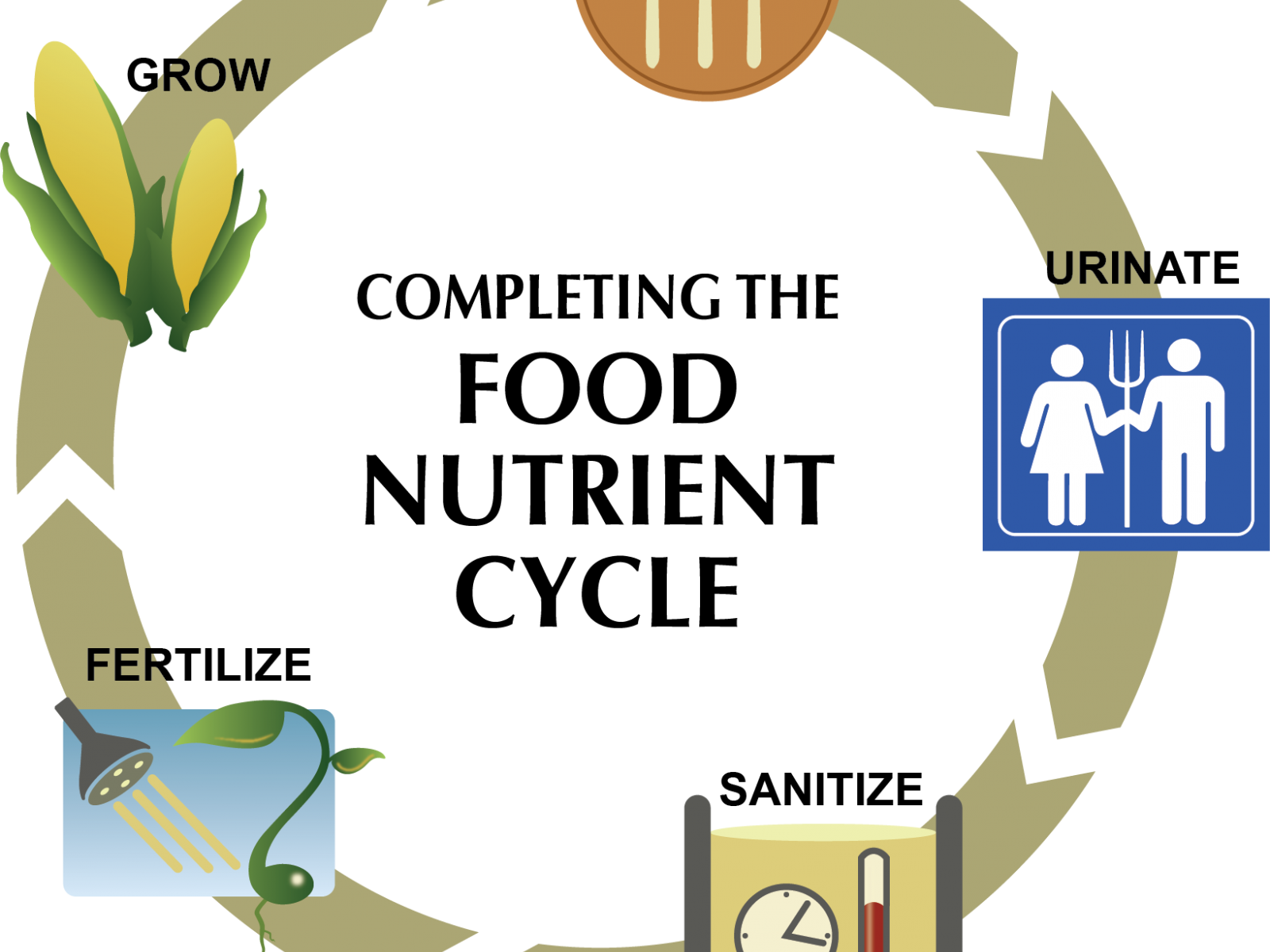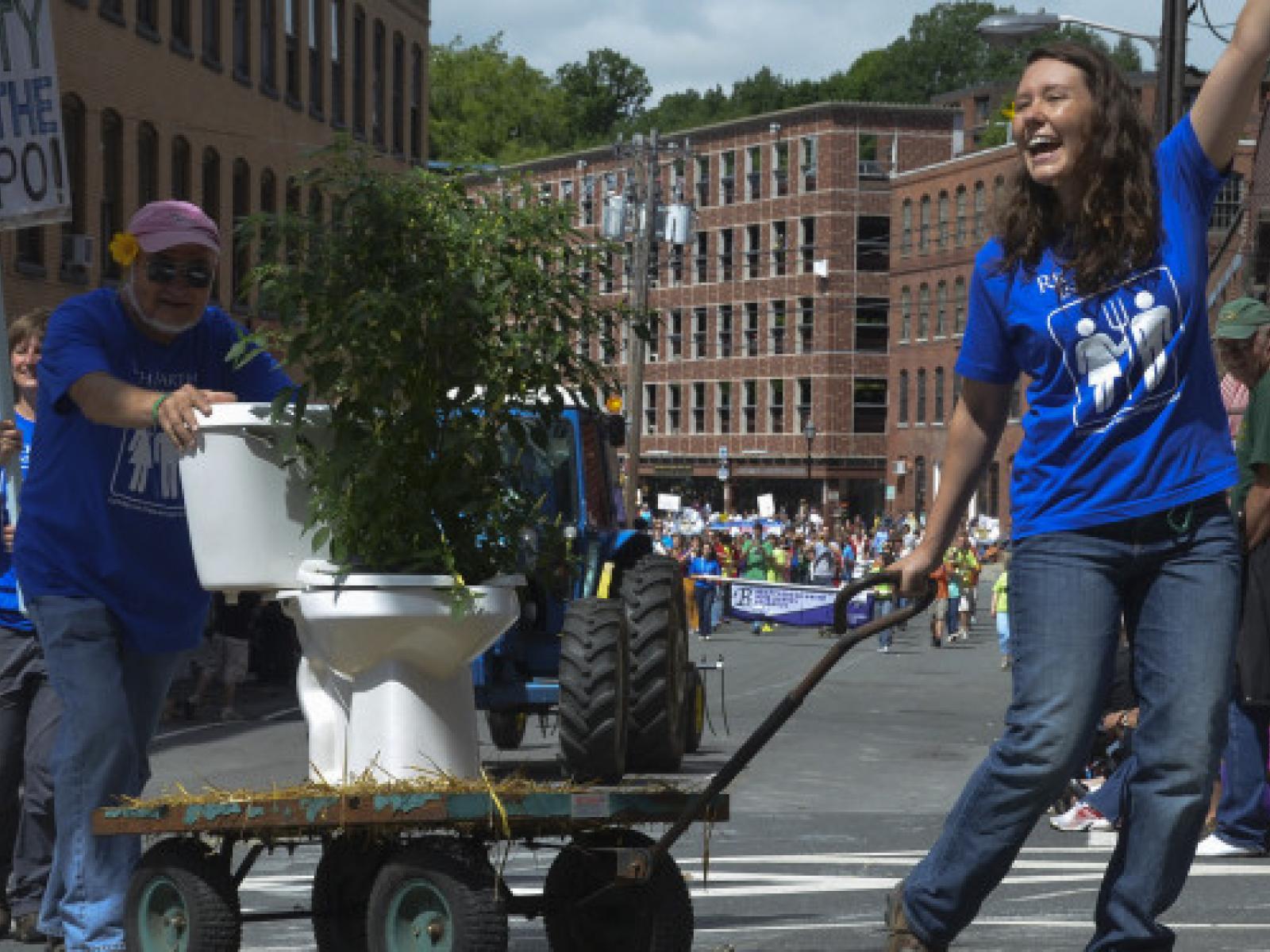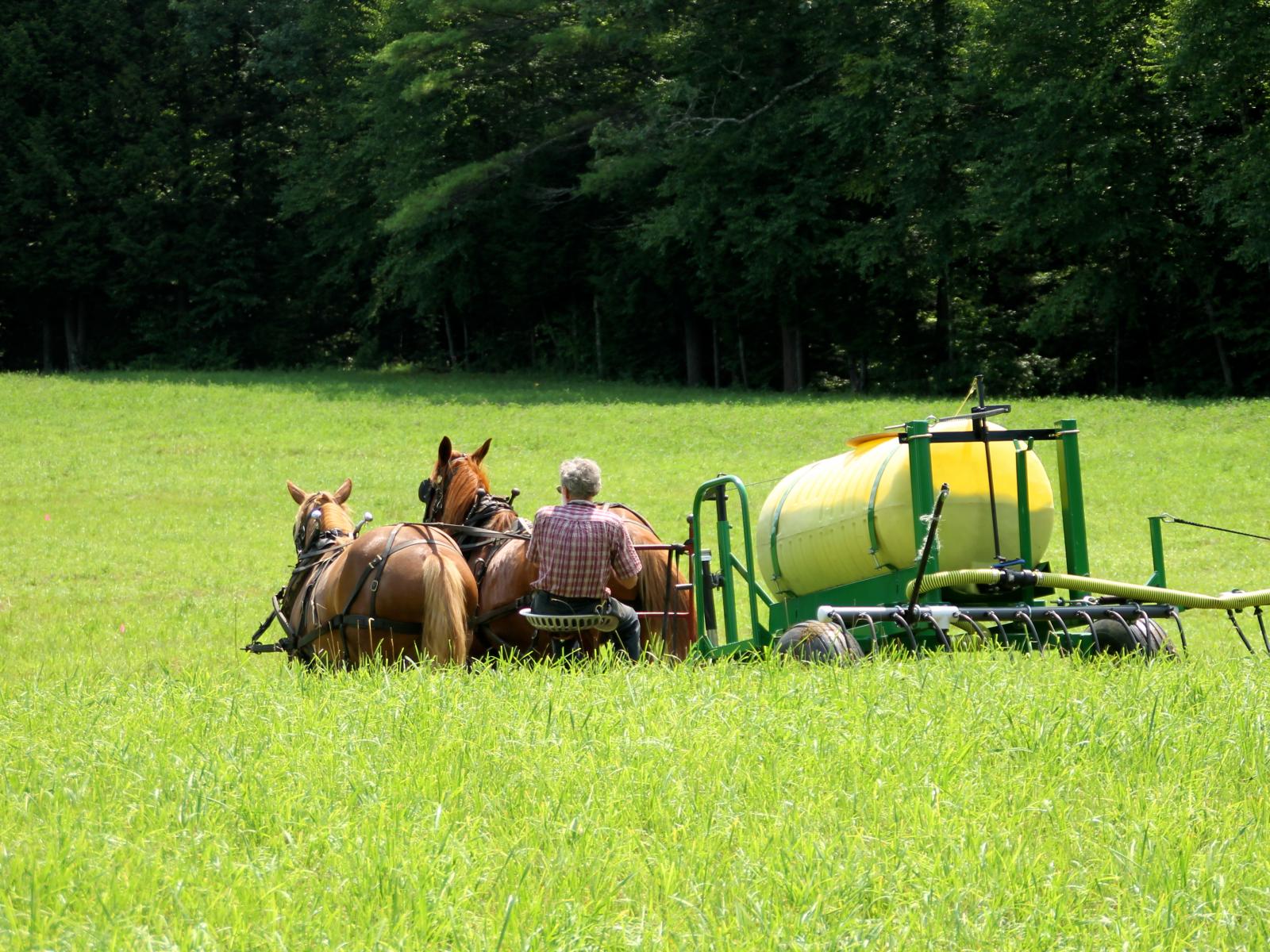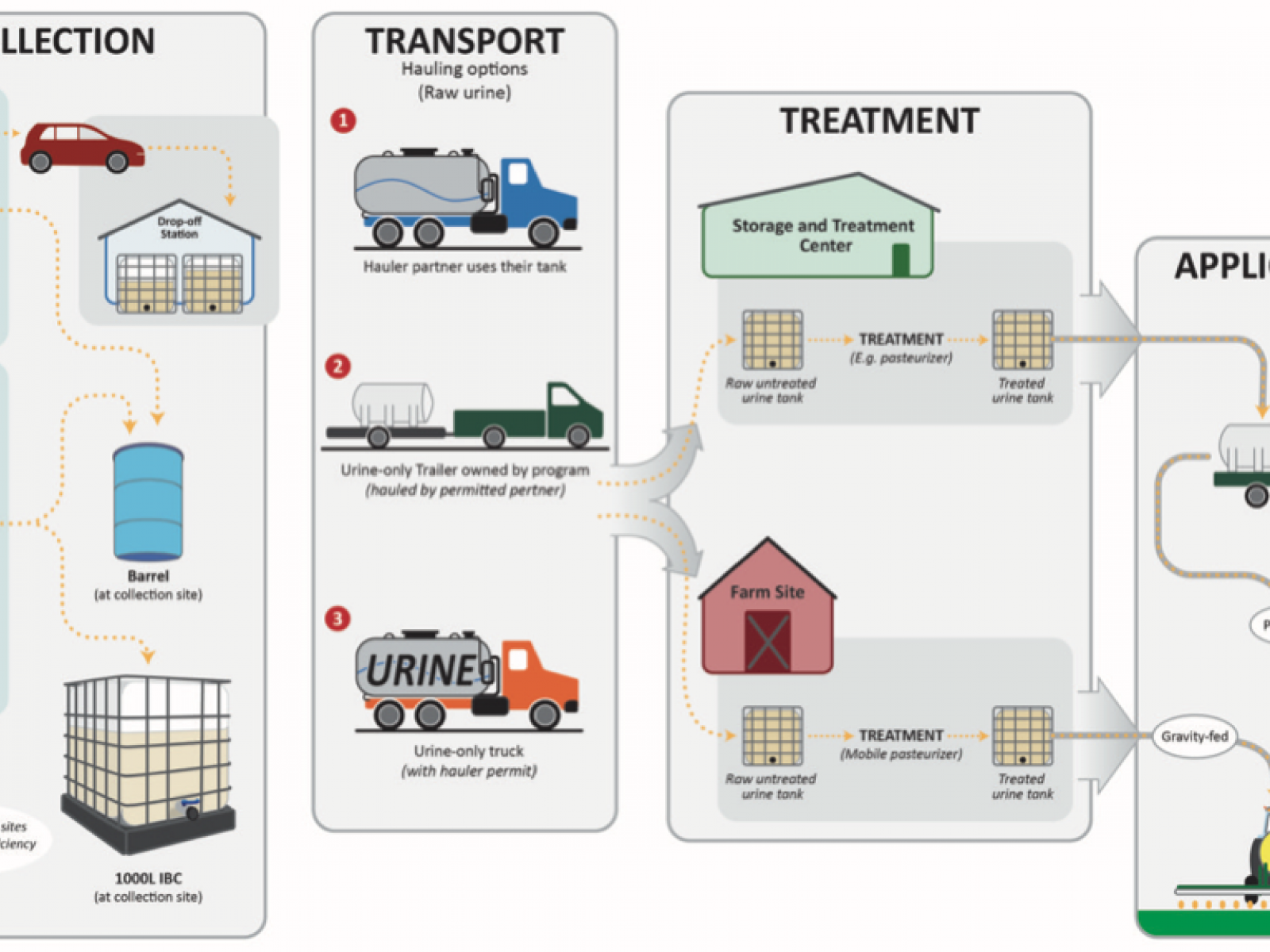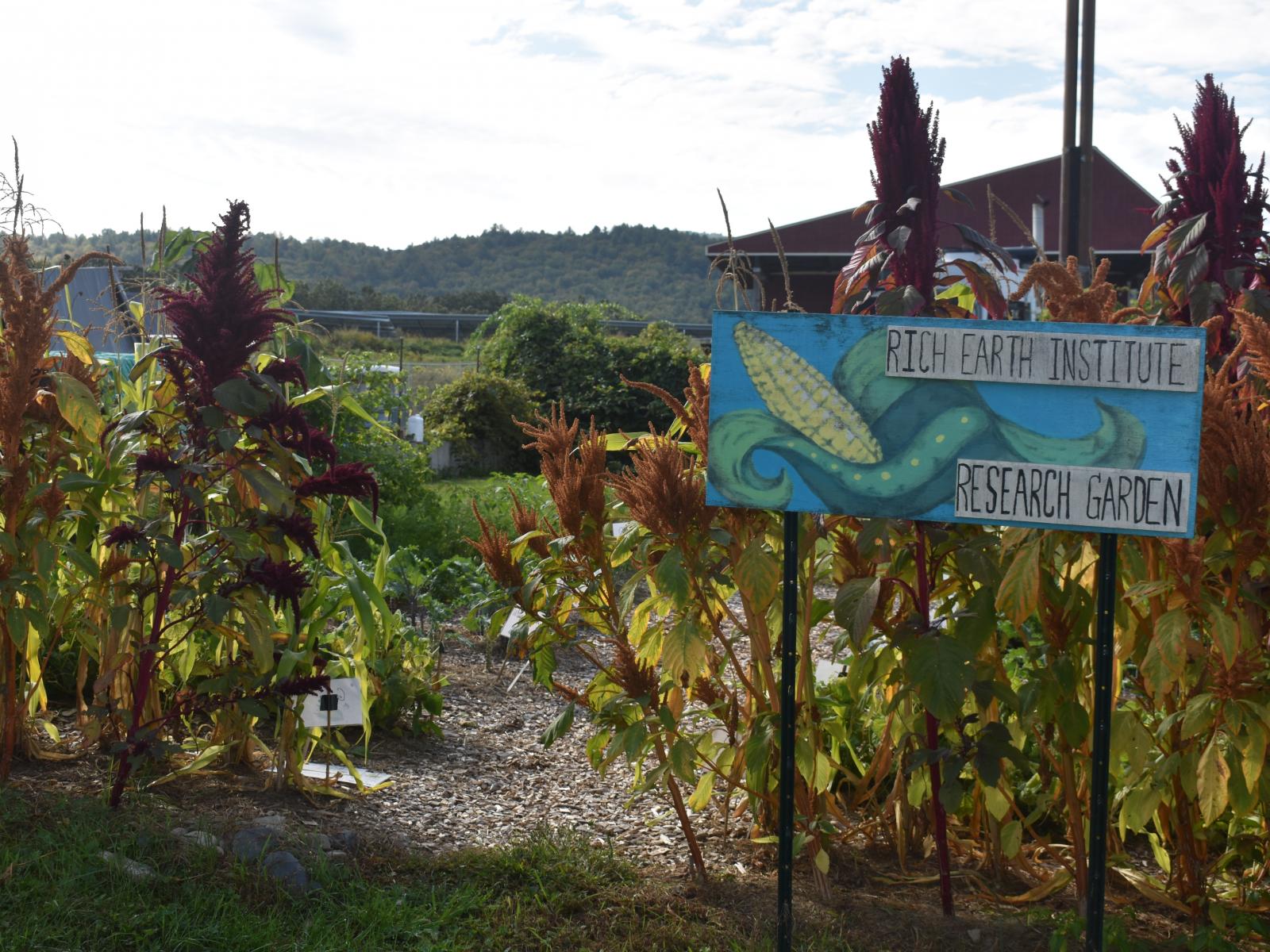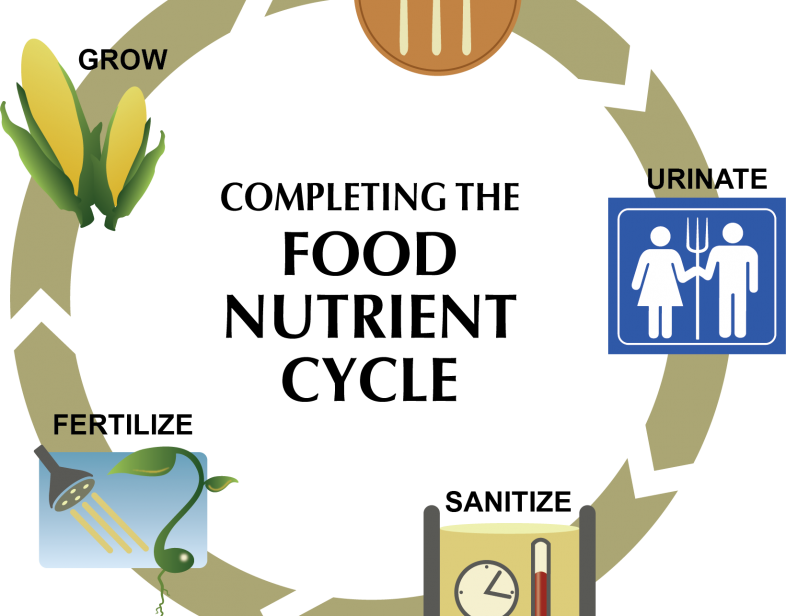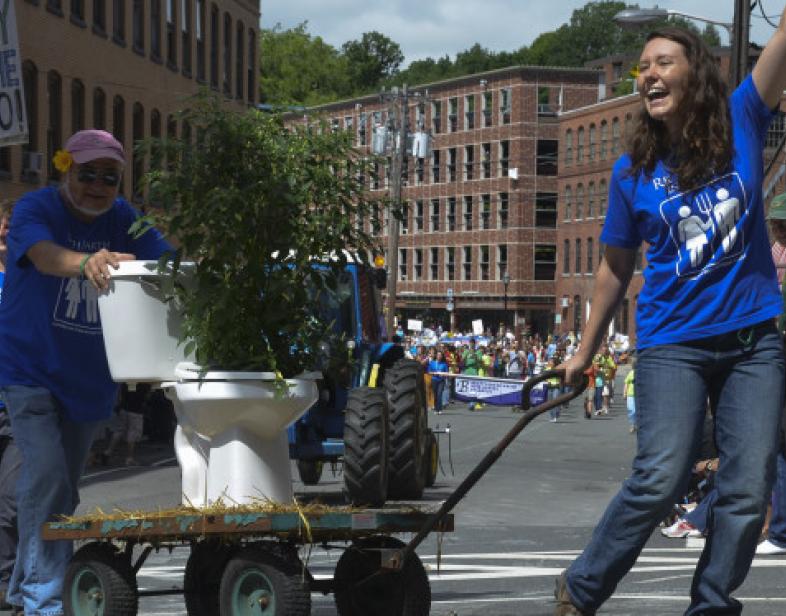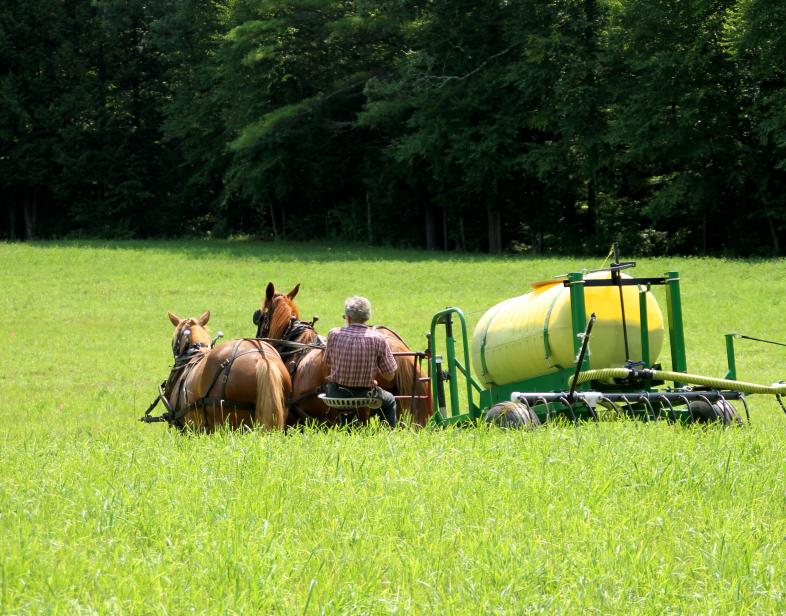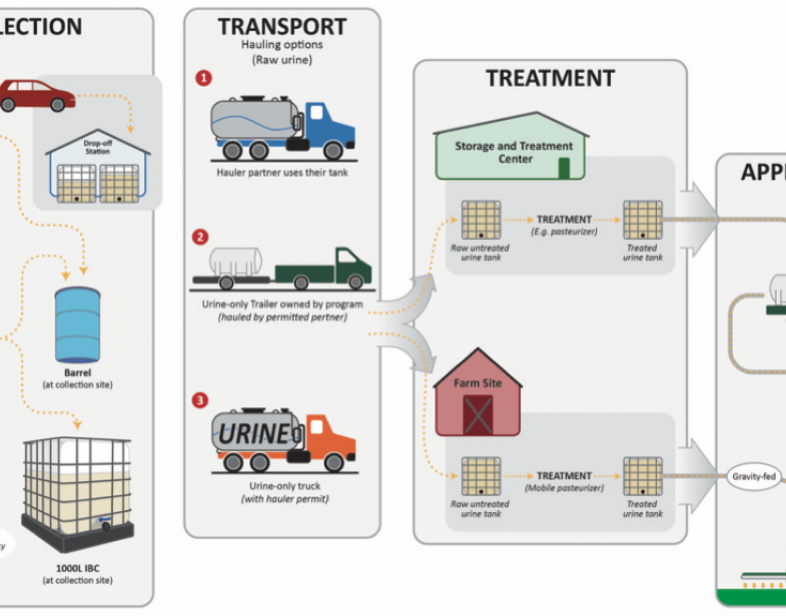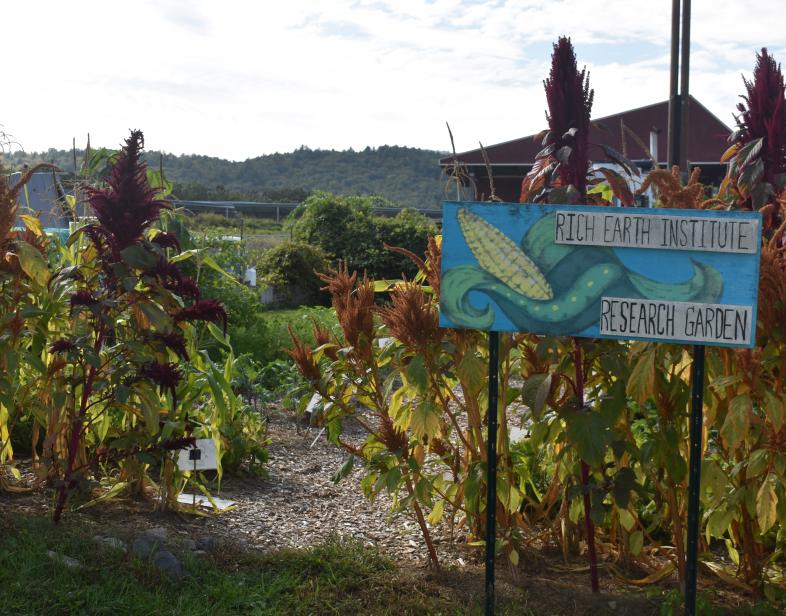An Overview Of Our Solution
Rich Earth Institute is an innovative environmental organization that operates at the intersection of sanitation and agricultural practices. Our solution is focused on the process of nutrient recycling, which produces fertilizer from nutrients in human urine. This solution mitigates nutrient pollution in waterways and conserves water through prevented toilet flushes. We have developed innovative technology to facilitate all aspects of the nutrient recycling process including collection, transport, treatment, and application on farmland. We have also developed networks to support each step of the process including pioneering regulatory pathways, recruiting urine donors, and working with farmers to apply our fertilizer. Having established a successful pilot in Vermont, we are now working towards deploying our technology in new communities at different scales.
- Population Impacted: 20000
- Continent: North America
Prénom
Nom de famille
Type d'organisation
Courriel
Analyse du contexte
Rich Earth Institute has developed a long-term scalable solution to mitigate environmental challenges caused by flushing human urine into the wastewater stream. We invent technology to recycle nutrients from human urine. The majority of nutrients in wastewater (80% of nitrogen and 50% of phosphorus) come from urine, even though urine makes up less than 1% of wastewater volume. These same nutrients are used in agricultural fertilizers, allowing our solution to offset energy usage and greenhouse gas emissions from synthetic fertilizer production.
Globally, nutrient pollution is destroying habitats and species within aquatic ecosystems. As cited by the United States Environmental Protection Agency (EPA), “Nutrient pollution is caused by excess nitrogen and phosphorus in the air and water. Nutrient pollution has impacted many streams, rivers, lakes, bays and coastal waters for the past several decades, resulting in serious environmental and human health issues, and impacting the economy.
Décrivez la solution technique que vous voudriez voir le public cible adopter.
Through technical innovation and community education, Rich Earth has created a regional nutrient recycling model that transforms nutrients in human urine from waste into a resource. Our urine-derived fertilizer is applied on local farmland, mitigating imports of more nutrients into the watershed. This cyclical model inverts the standard sanitation paradigm by capturing urine at the point of generation, and then processing nutrients using volume reduction, odor control, and pasteurization.
Our team has developed tools and technologies for both simple low-tech solutions and complex building-scale systems that enable audiences to participate in energy-efficient and environmentally friendly nutrient recycling processes. We have pioneered the first and largest urine recycling initiative in the United States, which operates under the country’s first permit to produce sanitized Class A fertilizer from nutrients in urine. We are in the process of replicating this model in new communities.
Décrivez votre intervention comportementale.
Rich Earth’s sanitation solutions directly engage communities in the ongoing practice of nutrient recycling. To pilot our first nutrient recycling network in Vermont, Rich Earth formed relationships with local constituent groups. For example, regulators learned about nutrient recycling and approved permits; facility owners saw the benefits of urine diversion and installed new sanitation systems; and groups of urine donors offered regular contributions. Additionally, farmers signed up to receive fertilizer; and the media reported on the successes of nutrient recycling.
Since launching our nutrient reclamation program in 2012, Rich Earth has been consistently engaged in research, public education, and urine donor recruitment. Our educational outreach includes classroom visits, conference presentations, and facility tours, as well as tabling at events such as festivals, farmers markets, food coops, and community celebrations. Since the Covid-19 pandemic began, Rich Earth has also increased our digital engagement through online events, webinars, conferences, social media, and our newsletter.
All of our educational activities focus on raising awareness, building networks, and increasing visibility. This work connected Rich Earth with groups of interested stakeholders including: the home-scale gardening movement, farm workers, tiny house and eco-village communities, K-12 science classes, outdoor education programs, environmental activists, and watershed conservation groups.
Leviers comportementaux utilisés
Au besoin, veuillez expliquer comment vous avez utilisé le ou les leviers avec plus de détails.
Choice Architecture: We encourage nutrient recycling by providing affordable and accessible collection equipment. We produce outreach materials that simplify complex scientific ideas. Connecting our work with the values of environmental stewardship prompts behavioral change around sanitation habits.
Emotional appeals: We highlight social and environmental outcomes of our work, which provides our constituents with pride and joy that they are helping make an impact by contributing their nutrients. We host an annual celebration honoring urine donors.
Information: We provide equipment, training, and workshops that get more people involved in the practice of nutrient recycling. We present narratives about the benefits of nutrient recycling.
Social Influences: Participants who have positive experiences with our program become nutrient recycling advocates. We have created an organizational culture that shares successes, facilitates exchange, and maintains visible indicators of our work.
Décrivez votre mise en œuvre.
tnRich Earth has educated communities across the country about the benefits of nutrient recycling through conference presentations, extensive media coverage, and branding. We have also supported localized nutrient recycling practices in new communities. Our team continues to deploy technology, create new regulatory pathways, and engage in community organizing as enabling conditions to spur widespread adoption of a new sanitation paradigm.
We ensured our sanitation solutions were adopted by providing resources to facilitate involvement in our work. We have published a replication manual and peer-reviewed academic studies to promote resource recovery as an emerging field. Our team regularly fields inquiries from individuals and community groups around the world interested in establishing nutrient recycling networks and research initiatives. Our proprietary technology serves different scale buildings as we have a variety of collection systems available for different facilities.
Regulatory barriers have presented a significant implementation obstacle. These barriers have taken significant time to address, and we are pleased to have pioneered policy and permitting pathways in Vermont for each step of the nutrient recycling process. Having developed infrastructure and created regulatory pathways, this work serves as a precedent for others to follow.
As key success factors, we have measured the following outcomes of our work to date:
*50,830 gallons of urine collected, resulting in 1,585,896 gallons of water conserved from prevented toilet flushes.
*2,542 pounds of nitrogen and 149 pounds of phosphorus diverted from our watershed, recycled into fertilizer, and applied on farmland.
*10 facilities have built or are currently building urine diversion installations that stand to engage thousands of people each year.
*Thousands of people engaged through educational events, facility installations, and gatherings served by our fleet of portable urine-diverting toilets.
Décrivez le leadership de votre solution. Qui dirige la mise en œuvre?
Founded in 2012 in Brattleboro, Vermont, Rich Earth is an innovative environmental organization focusing on solutions at the intersection of sanitation and agriculture. Our team is led by a 7-person board of directors and two Executive Co-Directors:
Abe Noe-Hays - An inventor, scientist, builder, and internationally respected expert in the field of productive sanitation.
Kim Nace - A project administrator with extensive experience in eco-sanitation, networking, and development of high performance teams.
Our 8-person staff team includes four people identifying as women and four people identifying as men, all aged 24 to 62. Rich Earth is also supported by an ECO Americorps Service Member, who is currently a young professional just out of graduate school. The internship program at Rich Earth serves about 10 high school or college aged people per year. Interns take leadership roles on projects and gain professional experience working with environmental sciences and/or advocacy.
Principaux intervenants et partenaires du programme
Urine donors and regulators have been the two most important stakeholders engaged in our solution. Regulators have provided permits to help Rich Earth make steps towards classifying urine as a unique substance within the waste stream. Urine donors have consistently contributed their nutrients. Rich Earth also operates urine-diverting portable toilet service for events and public gatherings. This service helps events operate within zero-waste principles, and engages thousands of people in nutrient recycling activities.
Our team was awarded a Small Business Innovation Research (SBIR) grant of $225,000 from the National Science Foundation in 2020. This award supports Research and Development for inventing automated, energy efficient building-scale urine collection and treatment systems that are less costly than many existing denitrification systems. Rich Earth interviewed over 100 stakeholders through an I-Corps program associated with this grant. These interviews are helping our team understand how to best encourage widespread use of our technology within sensitive watersheds.
We have built research partnerships with the Universities of Michigan, Buffalo, and Dayton, as well as many individual leaders in soil science, agroecology, and engineering. These partnerships connect our team with industry leaders including the Water Environment Federation, National Onsite Wastewater Research Association, Hampton Roads Sanitation District, and National Alliance for Water Innovation.
Qui a adopté le(s) comportement(s) souhaité(s) et dans quelle mesure?
Cumulatively since 2012, our team has inspired the following behavior changes:
-Over 10,000 individuals have contributed urine to Rich Earth’s nutrient recycling effort by using our collection technology. We measure this output by tracking urine collected from household collection systems, installations at facilities, and events served by our urine-diverting portable toilets.
-Four farmers apply urine derived fertilizer to their hay fields. We also have a waitlist of more farms ready to receive our urine-derived fertilizer. Field trials have demonstrated that this urine-derived fertilizer is effective as a direct replacement for synthetic fertilizer. We apply fertilizer following an optimal agronomic loading rate of 50 pounds of nitrogen per acre of hay.
-We have reached thousands of people through educational events such as presentations through conferences, webinars, school classrooms, and our annual Summit, all of whom have learned about the practices of nutrient recycling.
Quel a été votre impact sur la pollution de l'eau?
Our solution continues to reduce nutrient pollution in waterways by diverting urine from the wastewater stream. This solution decreases the volume of nutrients flowing through wastewater treatment plants, and prevents nutrients from entering ground water through septic system leaching. A recent report surprised local leaders by showing nitrogen from residential septic sources is impacting our water basin more than nitrogen from agriculture or urban areas.
As more people adopt nutrient recycling practices, we continue to see our impact grow. Swiss scientist Dr. Tove Larsen cites that one person’s daily urine output contains 11 grams of nitrogen and 1 gram of phosphorus, which annually amounts to 4 kilograms (8.8 pounds) of nitrogen and .4 kilograms (.8 pounds) of phosphorus. We also know the average toilet flush contains 2.6 gallons of water and the average urination event contains 1.2 quarts of liquid. Using this data, we can calculate our impact on water pollution and conservation.
Quel a été l'impact de votre solution sur les problèmes d'équité?
The long-term impact of our work advances the global movements for food and water sovereignty by providing resources to communities that enable water conservation and low-cost fertilizer production. On the short-term scale, Rich Earth serves as a hub of information to assist communities in coordinating and operating localized nutrient recycling networks. Our website is used as a repository of educational documents and videos that are available to the public free of charge. Every day, our staff receives and responds to inquiries from diverse constituents in the global community asking questions about Rich Earth’s research and implementation efforts. Our team has also worked to maintain the accessibility of our technology by distributing low-tech household collection systems on a donation basis and using grant funding to subsidize nutrient recycling installations. As part of our work, Rich Earth publishes many of the design plans for the technology we use in order to spur replication.
Quels étaient les avantages sociaux ou communautaires de votre solution?
*Communities learn about sustainable agriculture, watershed protection, and sanitation justice through the practice of nutrient recycling
*Local capacity to feed the community is increased without external inputs
*Our work reduces habitat fragmentation by enabling SMART growth and compact village settlement, which is often hindered by requirements for large septic fields
*We provide affordable options for low-income communities facing failing septic systems or aging wastewater infrastructure.
Quels ont été les co-bénéfices environnementaux de votre solution?
*Rich Earth educates the public about the impacts and root causes of nutrient pollution.
*Our fertilizer production offsets the impacts of producing and distributing synthetic fertilizer.
*We pioneered regulatory pathways in Vermont that can spur replication in other states.
*Rich Earth has raised awareness of urine derived fertilizer among our region’s farmers.
*We have focused attention on urine diversion as a focal point for environmental action in communities with sensitive watersheds.
Quels ont été les avantages connexes de votre solution par rapport au développement durable?
Our impact on creating new sanitation infrastructure has global implications for sustainable development. We recognize how different countries have their own set of sanitation challenges that can also be mitigated through nutrient recycling. In order to connect more people around the world with our solution, Rich Earth works in partnership with community organizations, academic institutions, and industry leaders in different countries including the Container-Based Sanitation Alliance (CBSA).
Durabilité : Décrivez la durabilité économique de votre solution.
Our solution establishes a circular regenerative economy that transforms waste into a resource while conserving energy and water. Our fertilizer and technology have not yet been monetized through commercial exchange, but stand to generate market-based revenue in the future. Nutrient recycling processes can be established for far less than the cost of upgrading septic systems or treatment plants. Federal funding through the NSF, EPA, USDA, and NFWF has helped our team develop research and technology. The only component we continue to rely on is ongoing urine donor participation.
We recently established an offshoot LLC to develop new capture and treatment systems. Profit from the LLC will support continued research efforts at the Institute.
Retour sur investissement : Combien a coûté la mise en œuvre de ces activités?
Rich Earth Institute began through the grassroots effort of a passionate group of citizens and a $1,000 seed grant. Our annual budget has since grown to $349,852 in 2019 and $456,292 in 2020. Nutrient recycling in southern Vermont cost about $70,000 to initially establish including a truck, pumping system, pasteurizer, collection equipment, collection depot, applicator, and storage tanks. Ongoing nutrient recycling activities are annually diverting as much as 10,000 gallons of urine from the wastewater stream. These operations are recycling nitrogen for the cost of about $9 per pound. By comparison, in the Chesapeake Bay area, nitrogen removal costs $311 per pound with septic systems and $43 per pound at wastewater treatment plants.
Comment pourrions-nous reproduire cette solution ailleurs avec succès?
Once the proper relationships have been formed, communities anywhere and across all demographics can practice nutrient recycling. By educating people about nutrient recycling, our team connects the dots to teach new audiences how nutrients in urine are both destructive in waterways and beneficial in agricultural settings. As audiences understand this connection and gain access to Rich Earth’s innovative nutrient recycling technology, they become empowered to engage in environmental stewardship and support local farming operations.
We have assisted community efforts to replicate our work at different scales in different places. Rich Earth is currently creating a new nutrient recycling network with a hub in Rockingham, Vermont. A grant of $60,000 is enabling our team to build required infrastructure and conduct appropriate community outreach. Building the network includes creating a collection depot, recruiting urine donors and farmers in the region, and providing collection equipment.
